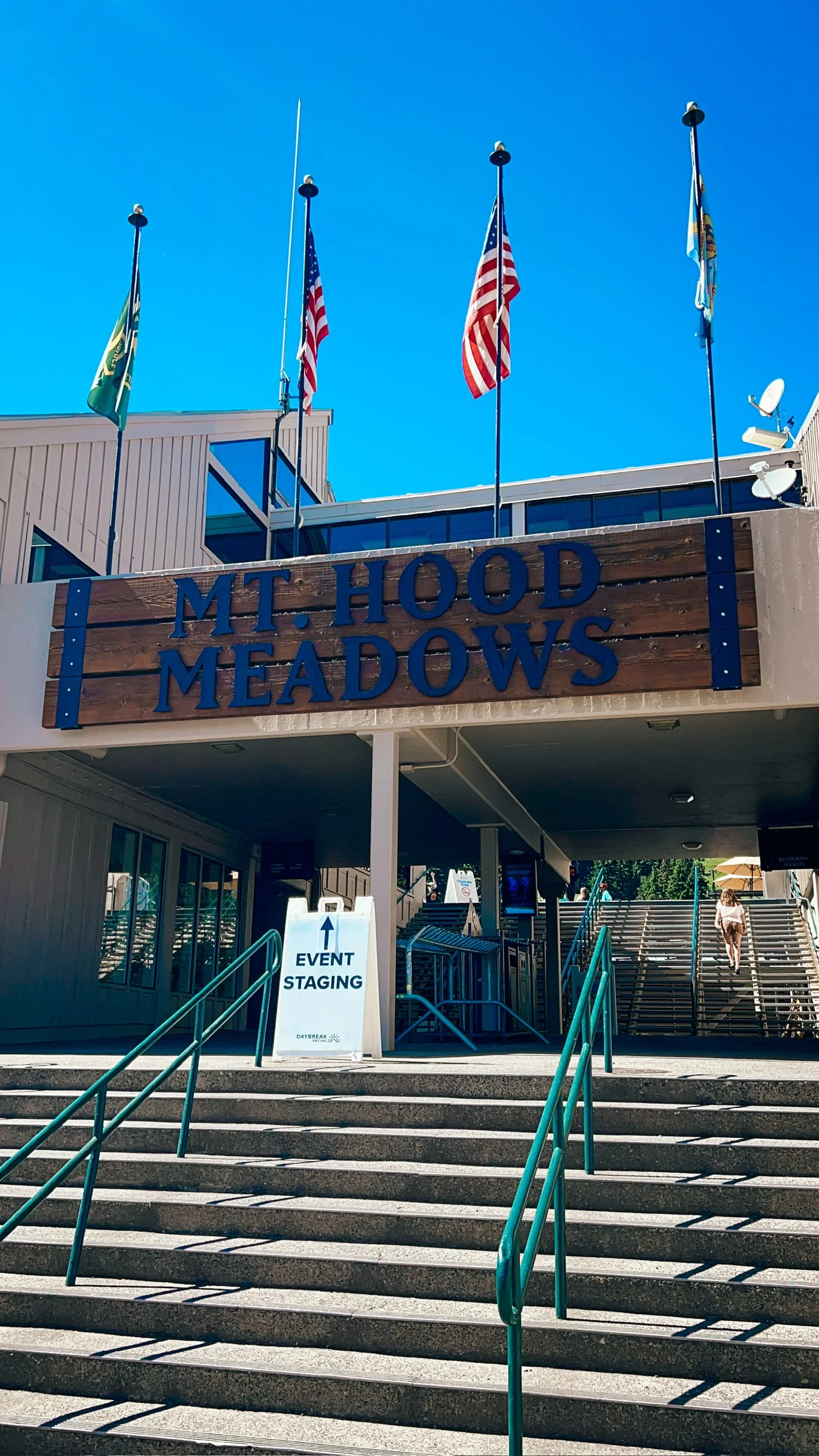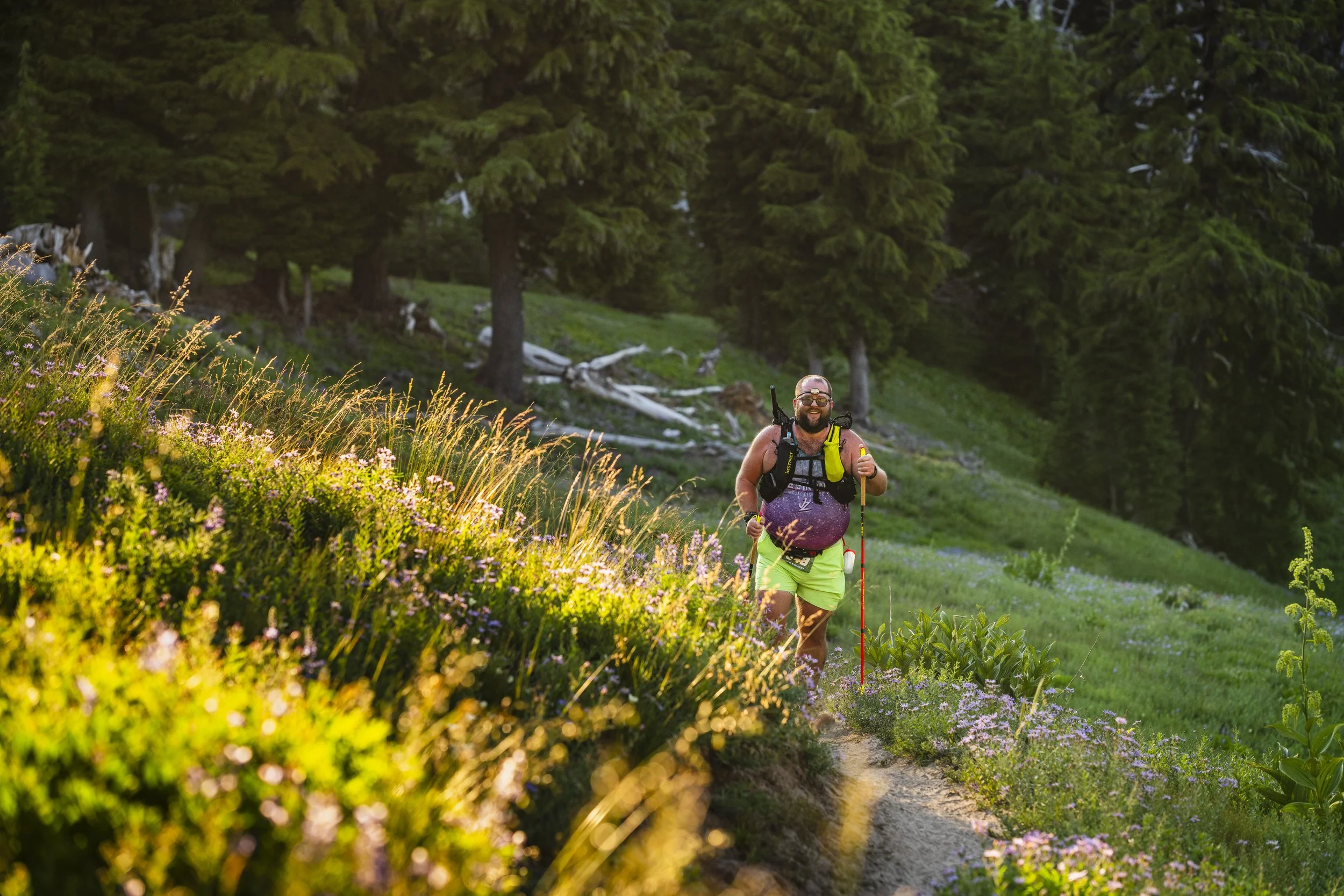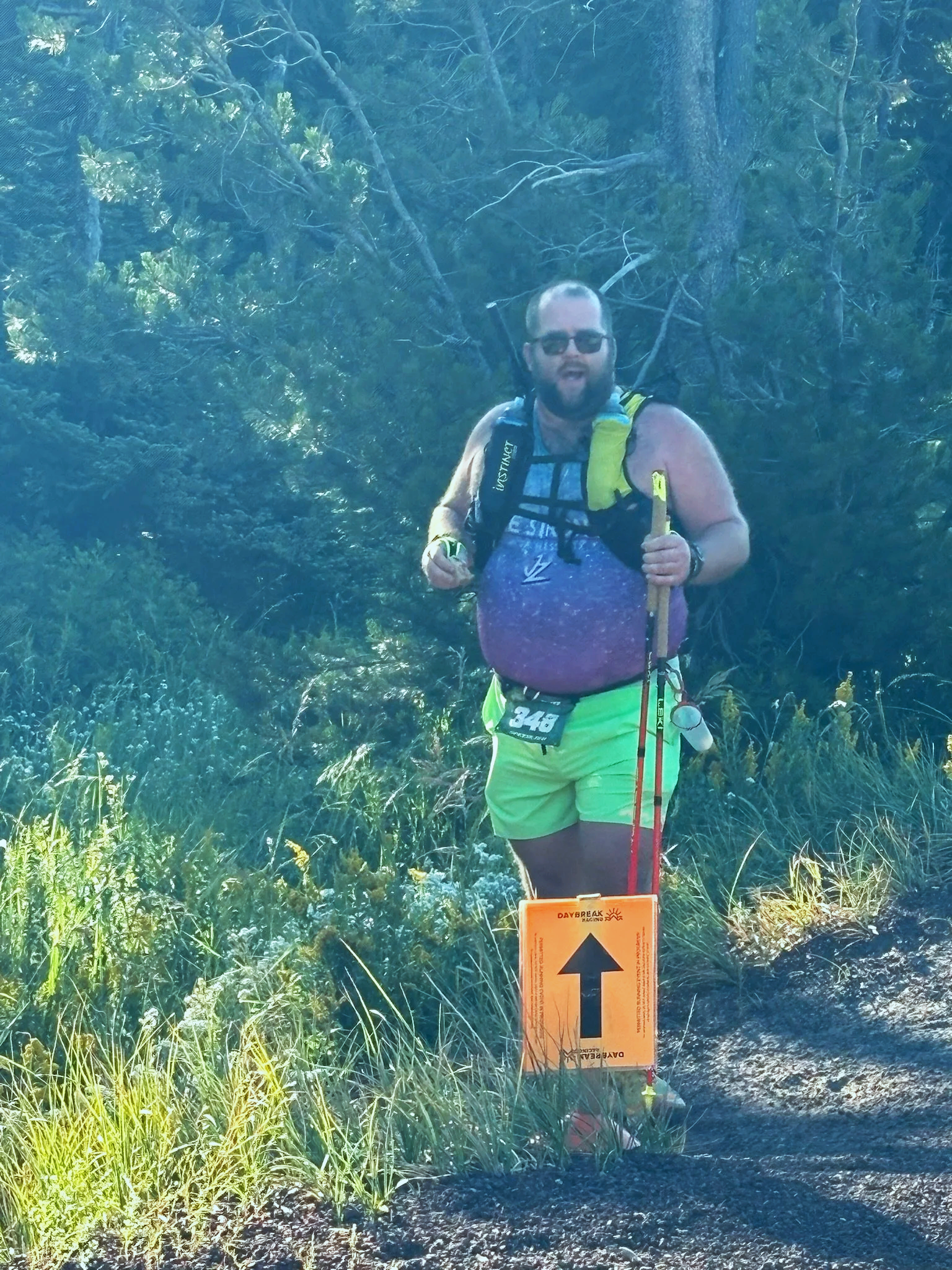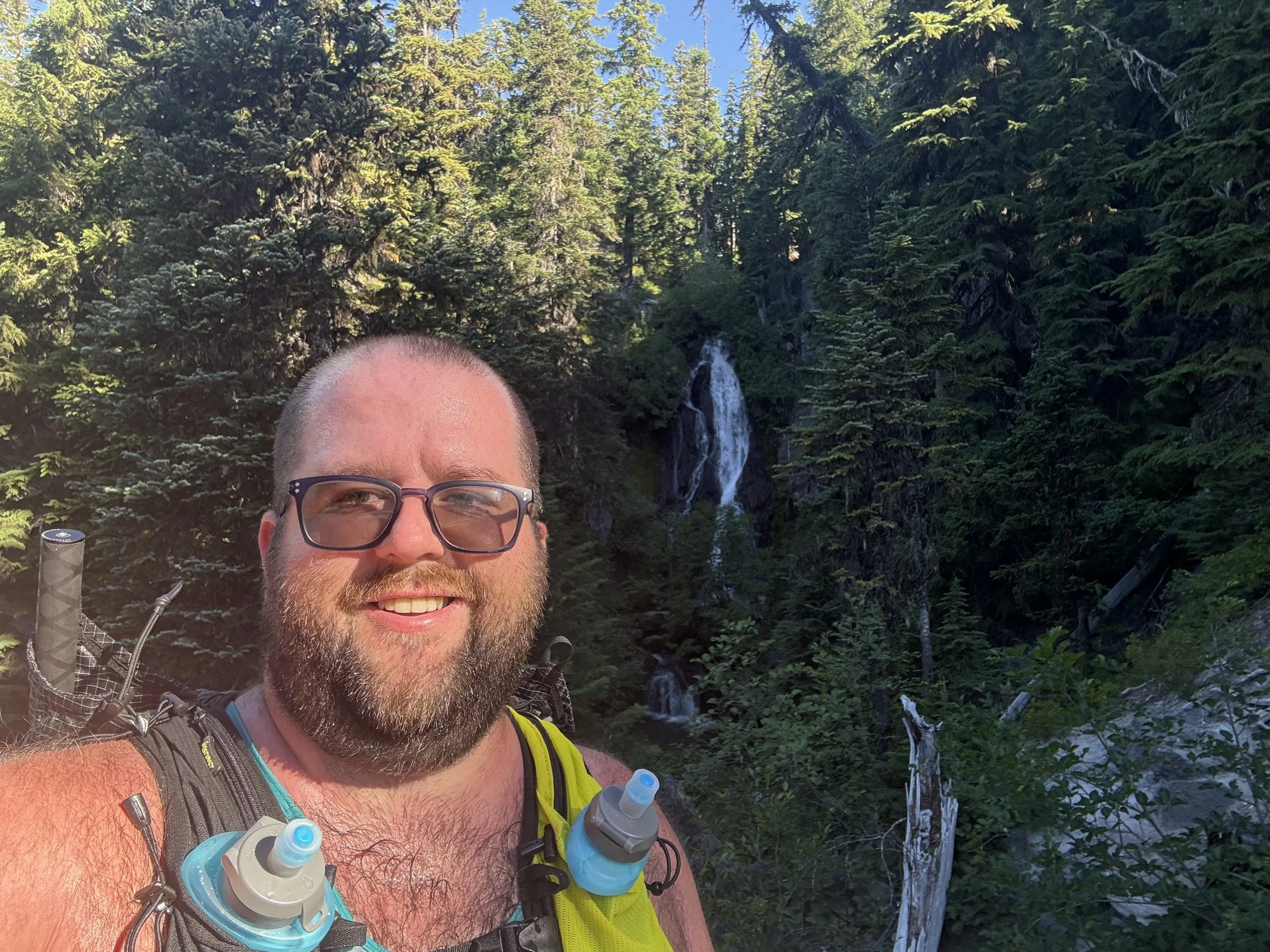Hood Hundred: A Big Swing
How it Started
I started the year saying that this was a year for big goals, and the Hood Hundred was the centerpiece for the year.
Obviously living in Houston and picking a race in a location completely unknown to me is going to have its potential for complications, but after seeing the video from year one of the race, I couldn’t resist. In my defense, I didn’t go in completely blind. I spent a lot of time reading through the website and I want to draw your attention to two paragraphs from their website:
This 100 mile course offers a world-class scenic tour of Mt. Hood’s high country and its dryer, sunnier eastern backcountry, with fantastic crew access, well-appointed aid stations and exceptional volunteer support. The course format is a lollipop loop-style route—essentially a 20 mile outbound stem from Mt. Hood Meadows to a dynamic 60 mile figure eight loop, then the 20 mile ridgeline return to Mt. Hood Meadows for the finish. This is a true mountain ultra, with a suprisingly fast first half and a sneaky tough back half. Awe-inspiring views, trails and community support await along this challenging and incredibly diverse course!
And also:
The following surfaces will be encountered. Non-singletrack is intermittent and split into multiple shorter stretches.
Singletrack trail: 82 miles, mostly smooth dirt, some segments of rocky and technical
Doubletrack (native dirt/rock surface): 8 miles
Gravel (maintained forest road): 7 miles
Pavement: 3 miles
Prep for the race began toward the end of 2024, with a goal of building as much fitness as possible to face down this formidable goal. My coach and I worked hard to build an engine that could go all day, all night and into the next day with a huge variety of workouts that went from interval training on the track, to miles on the treadmill at an incline, countless hours on the stair mill, and boxing to build strength and work on agility. I also signed up for a Hyrox competition in the hope that the strength and mobility work prepping for that would make me a more resilient runner able to handle the mountain just a bit better.
I also went after a 50k here in the Houston metro in February which was a DNF due to safety concerns for the drive home, but I felt really good about the fitness we were building already in the year.
I also gathered a fantastic crew to go with me. My coach Jesse and his wife Monica, Allie my girlfriend, and my friend Dan who I paced at Moab and would be crewing and pacing for me at Hood.
How It Went
Pre-Race
Lists for aid stations and packing lists began weeks before the race. I spent hours dissecting the course trying to anticipate which pack was best to take to make sure I had the right number of bottles/nutrition, access to my trekking poles etc. The final packing began Monday night, laying out all the necessities and trying to anticipate anything that might be needed by myself or the crew.
As an over-packer I was in my element. I was bringing three pairs of shoes, packing for every contingency I could imagine and hopefully prepared and able to to adapt to any unanticipated element with the supplies we had.
The whole crew was flying together, so we flew out from Houston Thursday. This would give us plenty of time to get to Oregon if there were any delays and still have plenty of time to get rest, make it to packet pick-up Friday and get some shakeout work done as well. Travel to Oregon went without a hitch and we had plenty of time Thursday to get settled in and head out for an evening hike out to Mirror Lake. To say that the weather and the scenery felt perfect was an understatement. The pacific northwest is absolutely gorgeous and I fell in love with the land immediately.

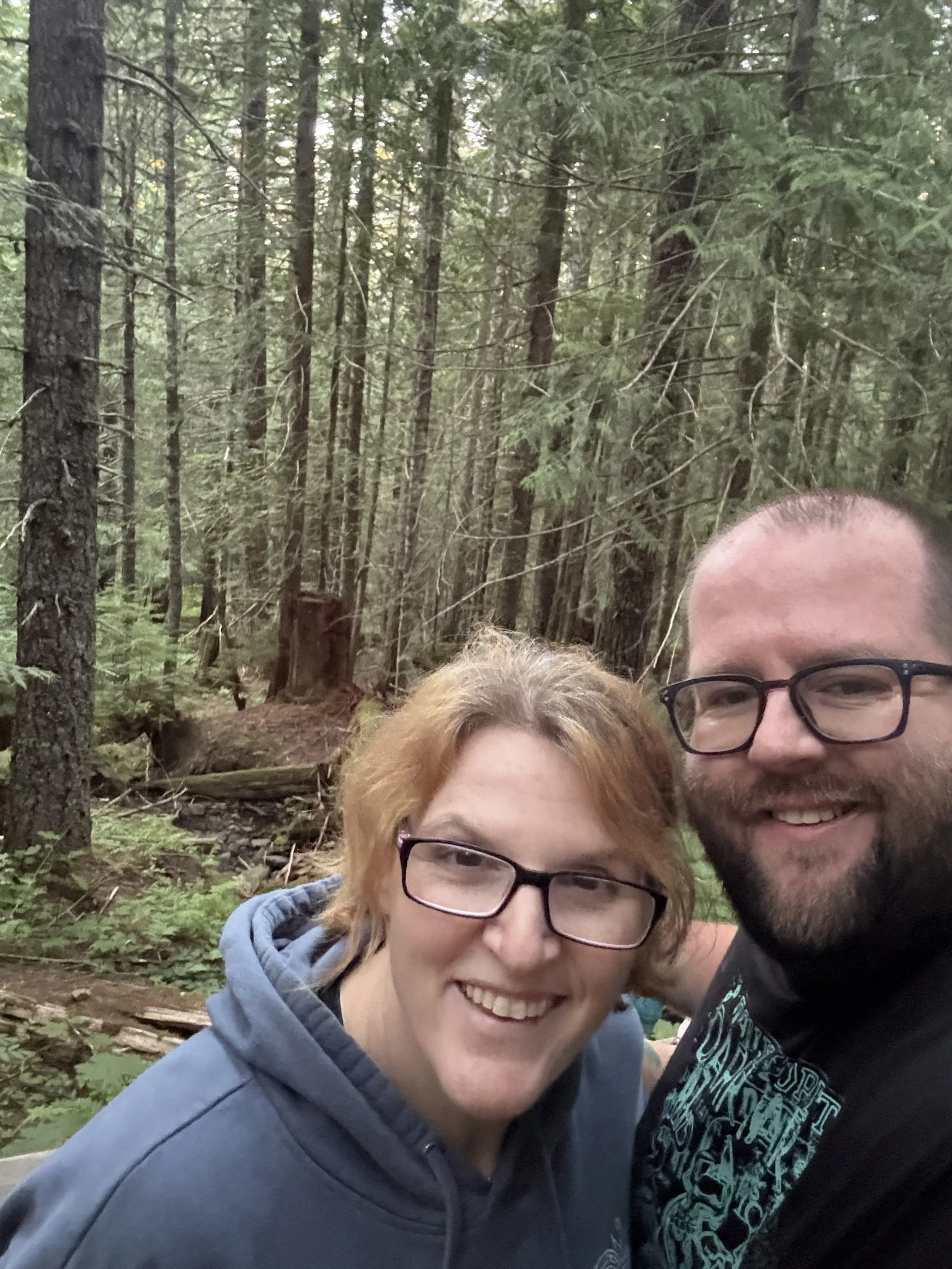
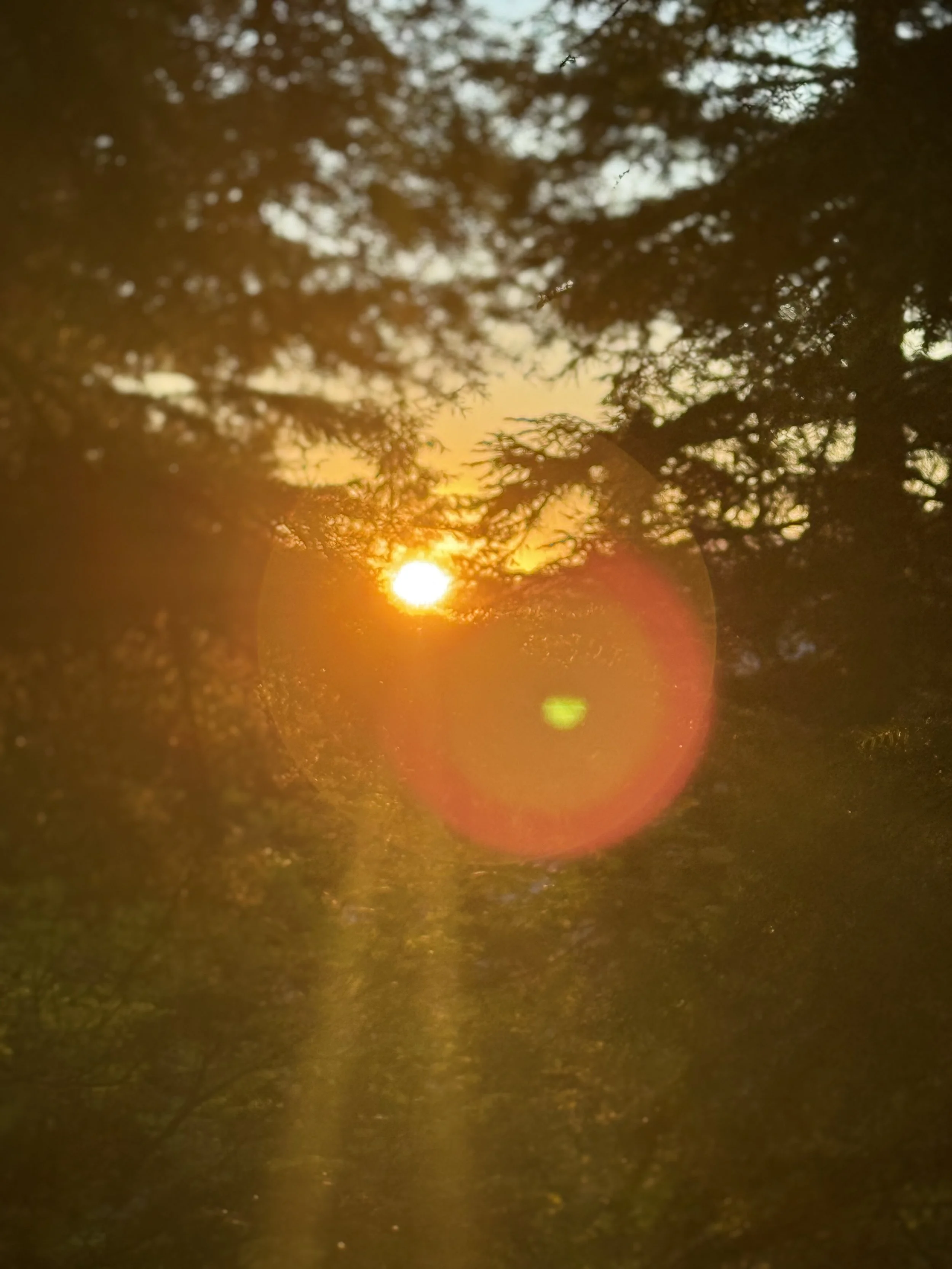
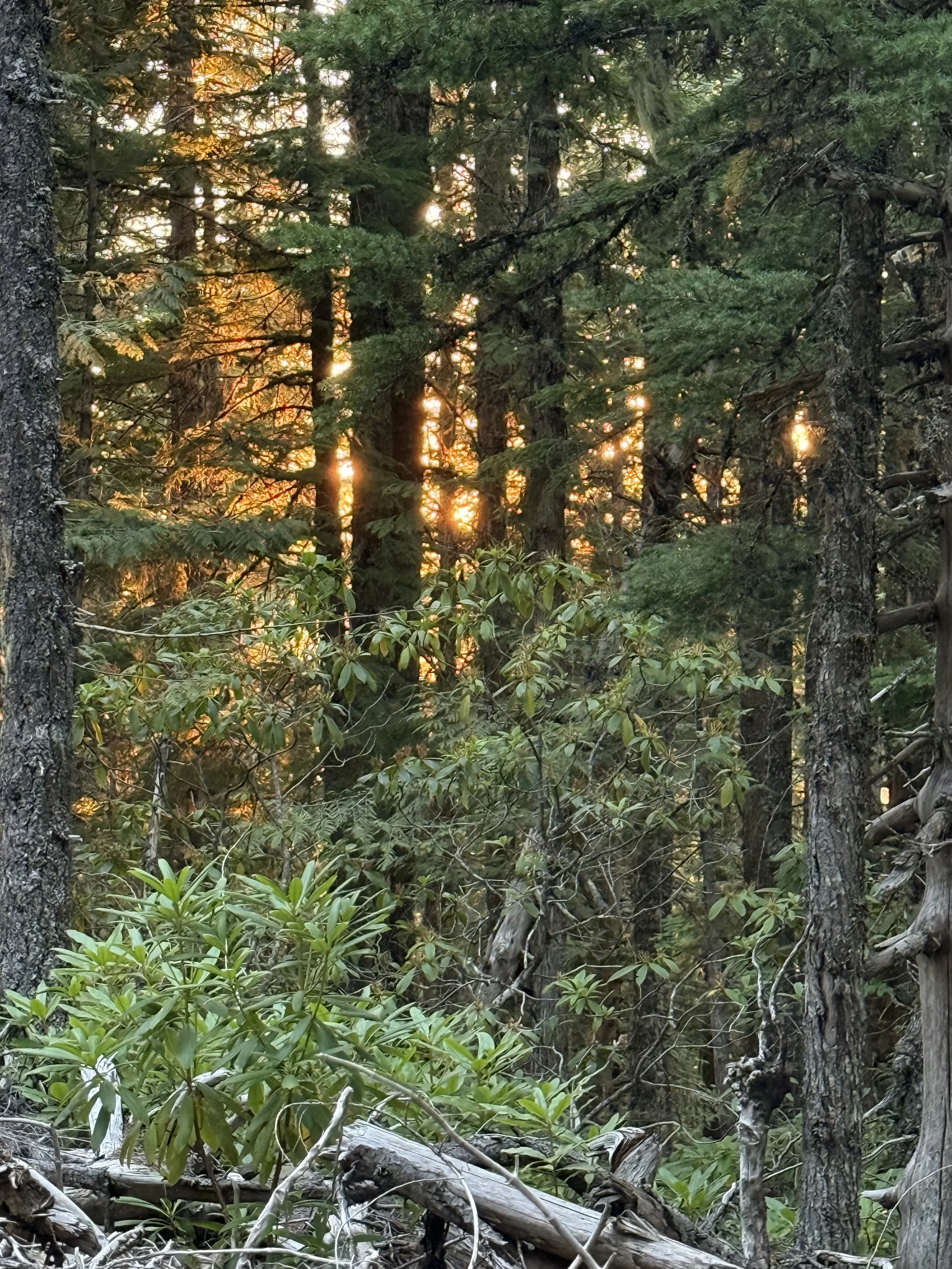
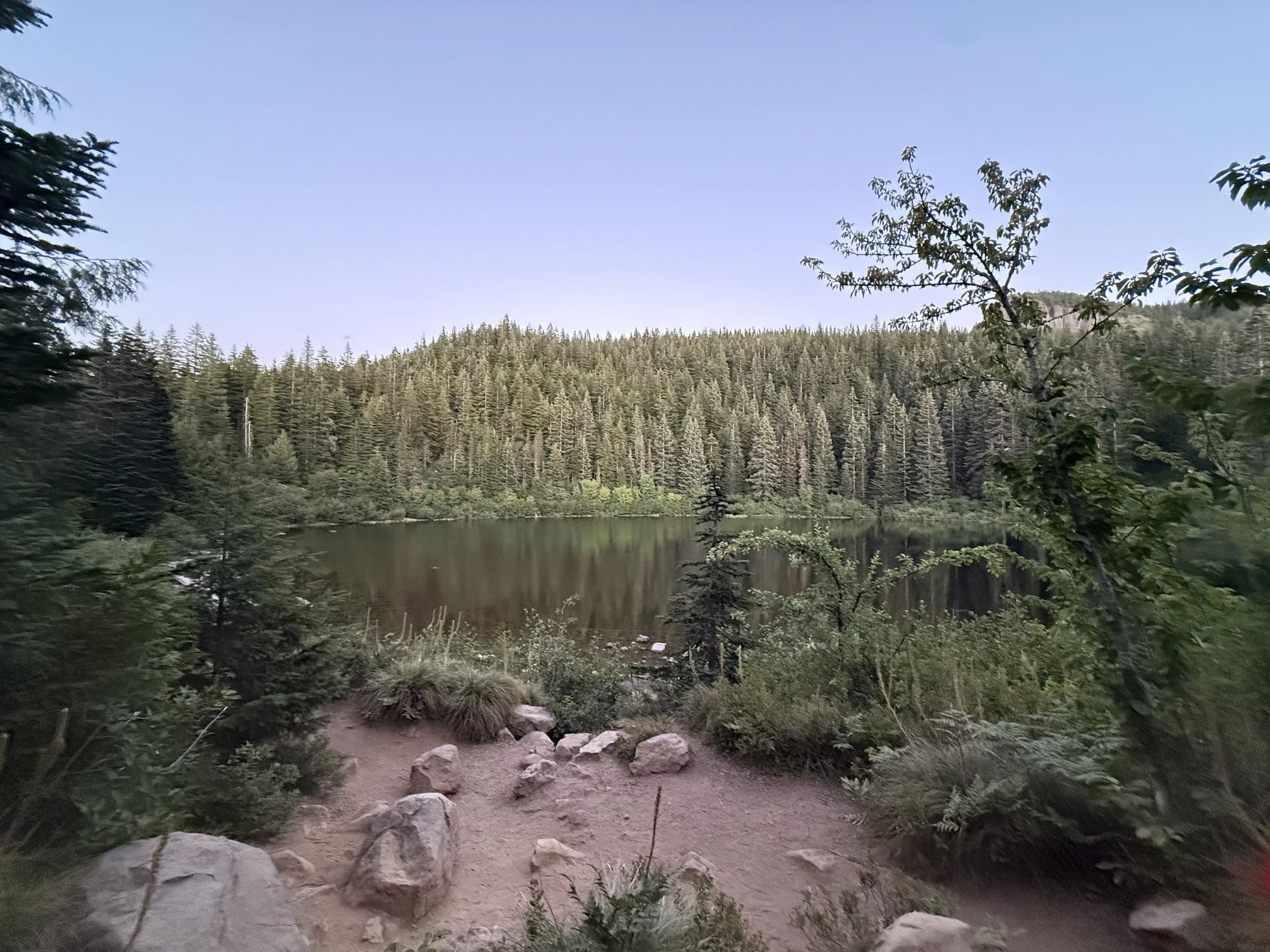
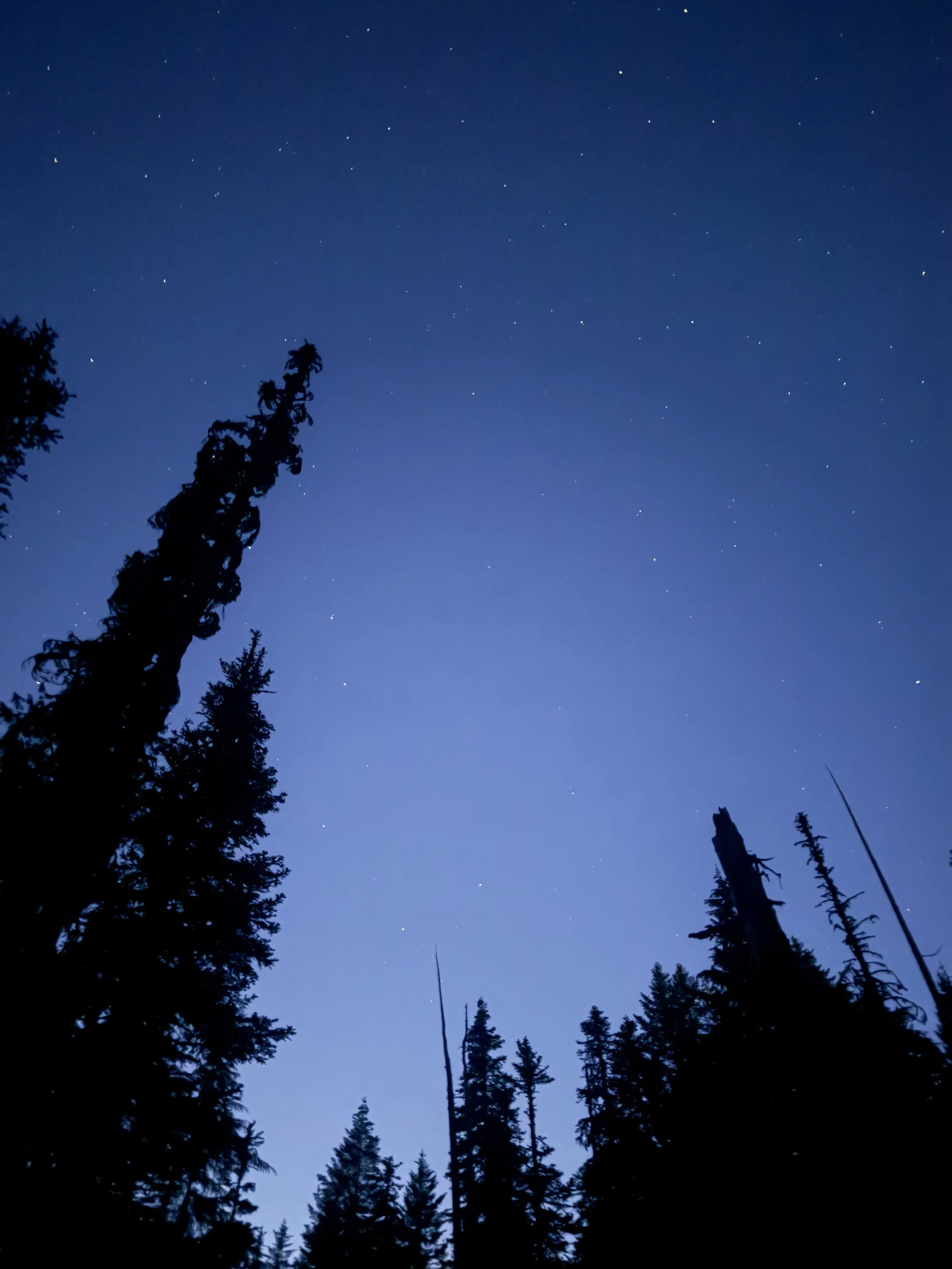
Friday we went out for a shake out run in the morning on another local trail, keeping it short and easy since we did 4 miles to the lake with some nice gain and descent the night before.
Packet pickup was pretty straight forward. We got there about 90 minutes before the required athlete meeting. There wasn’t a whole lot there to see from sponsors or an expo area, though I did get to try on some Speedland (presenting sponsor) shoes. From there it was time for dinner and then an early bed after double checking that I had everything ready for the race on Saturday.
Race Day-July 26, 2025
Race day began at 2:45 AM for us. With a 5AM start, we were staying about an hour away from the race start and wanted to be sure that we arrived with time to spare for pre race bathroom breaks etc. There were 250 runners toeing the start line and the energy felt pretty contagious in the pre-dawn air. Final checks with the crew and then I joined the other runners in the start corral. I knew that I was going to be hanging out in the back of the pack so as the countdown moved in from 10, I worked on calming my nerves and taking in the vibe as I attempted to do something that by any standard was going to be a reach.
Start to Aid Station 1: 7.1 Miles 1549 ft up, 1699 ft down
This first section went right up Mt. Hood to the timberline, across and back down. My crew would need to walk about a quarter mile from the starting line, while I was taking a scenic 7 miles to get there. Everyone left the start line with lights on and we quickly strung out in a line heading out on the trail. I wasn’t in a rush to be in anyones way so I took a position near the back. By the end of the first mile, I was in the very back. I soon realized that this had the potential to be a long and lonely day as the pack continued to gap me on the climb, but I had a plan and so far, the I was pacing on target. As I climbed the mountain the sun made a steady climb up into the sky and I was treated to a stunning mountain sunrise as I made my way through the trees on the lower portion of the mountain.
The climbing was steep and I was very clearly not in Texas anymore, but man was it beautiful. Three women were volunteering as sweepers and they caught up to me around mile 2.5-3, and it was clear that we were going to be spending a lot of time together throughout the day. I think as sweepers, they weren’t supposed to be too close to the racers though, because for the first 20 miles, if I stopped for a second they would stop further back and wouldn’t pick up their trek until I began again. Occasionally they would catch up to me by accident, but they always paused and then continued on again after.
Photo Credit: James Holk (@jamesholk)
As I cleared the ridge line and made my way over some rocks to the descent, my quads also reminded me that we weren’t in Texas anymore. I began picking up speed on the descents and making up time as planned. My goal was to average about a 17:30 pace in the first third to half of the race which would keep me a head of the hard cutoffs on course and build in some rest time if I needed it later in aid stations. Somewhere between mile 5 and 6 as I was running along the trail moving through a field of flowers, my foot found a rock and I turned my ankle. This ankle was surgically repaired about a decade ago and I’ve always been a bit cautious with it, and naturally this is the one that found the rock hiding under some overgrown flowers. I felt the tendons stretching as the ankle rolled, but luckily was able to catch it with my poles. Man did it hurt, but I took a minute to stand, then to walk and was able to continue on. My downhill pace was no longer making up time, but I was hopeful that as my ankle got used to moving again after the roll, I would be able to pick up some more speed along the way.
Aid Station 1 to Aid Station 2: 4.1 Miles 525 ft up, 1106 ft down
I arrived at aid station 1 about 30 minutes behind my planned schedule, but within the soft cutoff time to make the hard cutoff at aid station 4 of 12:30. My crew was waiting for me and I spoke with one of the medics about my ankle. They offered to tape it up for me and check it out, but I was feeling better and knew I was behind schedule so I just wanted to grab my fluids and gels, and then keep moving.
This section was relatively uneventful, and I was able to continue moving better but still had a lot of time to make up, and I could tell that even though I was moving better, I was moving more cautiously than before and that wasn’t helping me to make up time. It was in this section that I saw the first waterfall on course and if you don’t stop to take the photo at a waterfall, what are you even doing?
I finished this section out knowing my ankle was feeling better but that there was no real buffer between me and cutoffs. It was in this section I began to see how much sand was on the trails out here in Oregon, which was a surprise for me. When I saw my crew at aid station 2, we dumped sand from my shoes and prepped for a 12 mile combination section where I wouldn’t see them again until station 4.
Aid Station 2 to 3: 4.2 Miles 1079 ft up, 381 ft down; Aid Station 3 to 4: 7.8 Miles 1224 ft up, 2999 ft down
I’m treating these two sections as one because aid station 3 is a water only aid station and I wasn’t able to see my crew. The section to aid station 3 involved a lot of climbing and is also where I began crossing scree fields on the mountain. This climb was unrelenting, as the there was very little descending between aid stations two and the crest of the climb that was about 3/4 of the way through the section to aid station 4. Most of the climbing up to the unmanned water station was on washed out fire roads, so I was able to maintain my best pace, but still knew that I was losing time. I rolled my ankle a second time on the way to the third aid station, because of course when it happens once it’s gonna happen again.
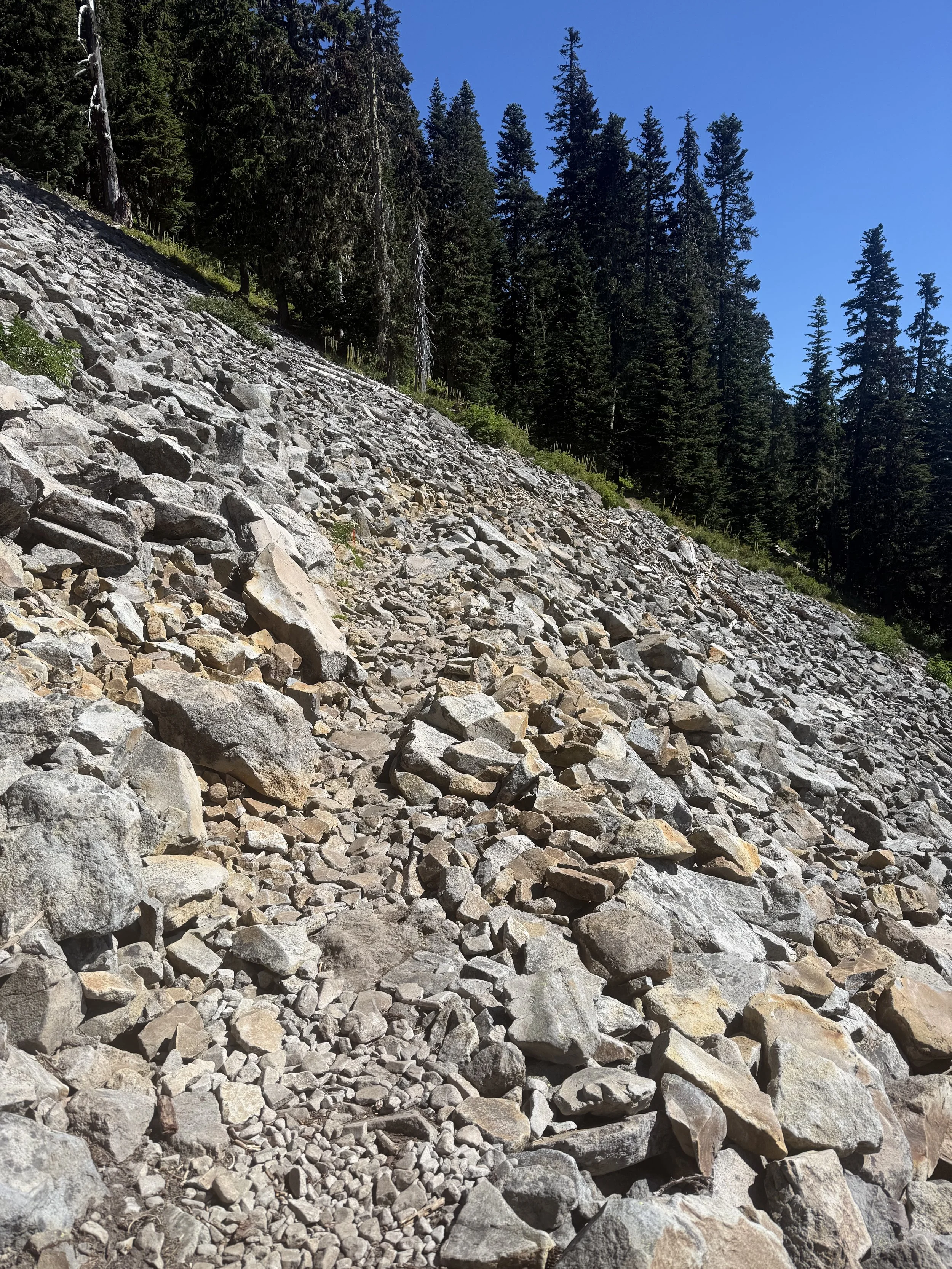

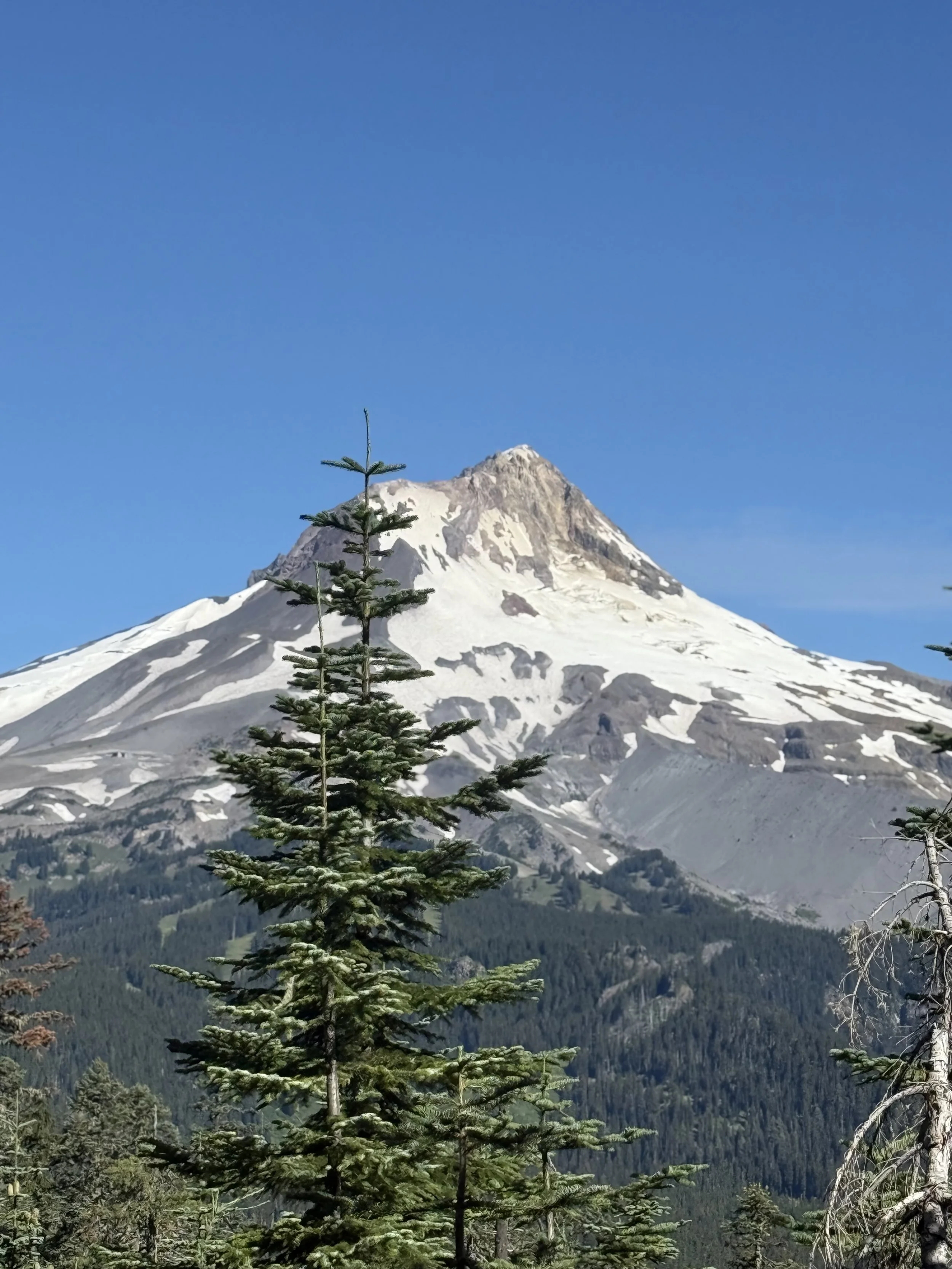
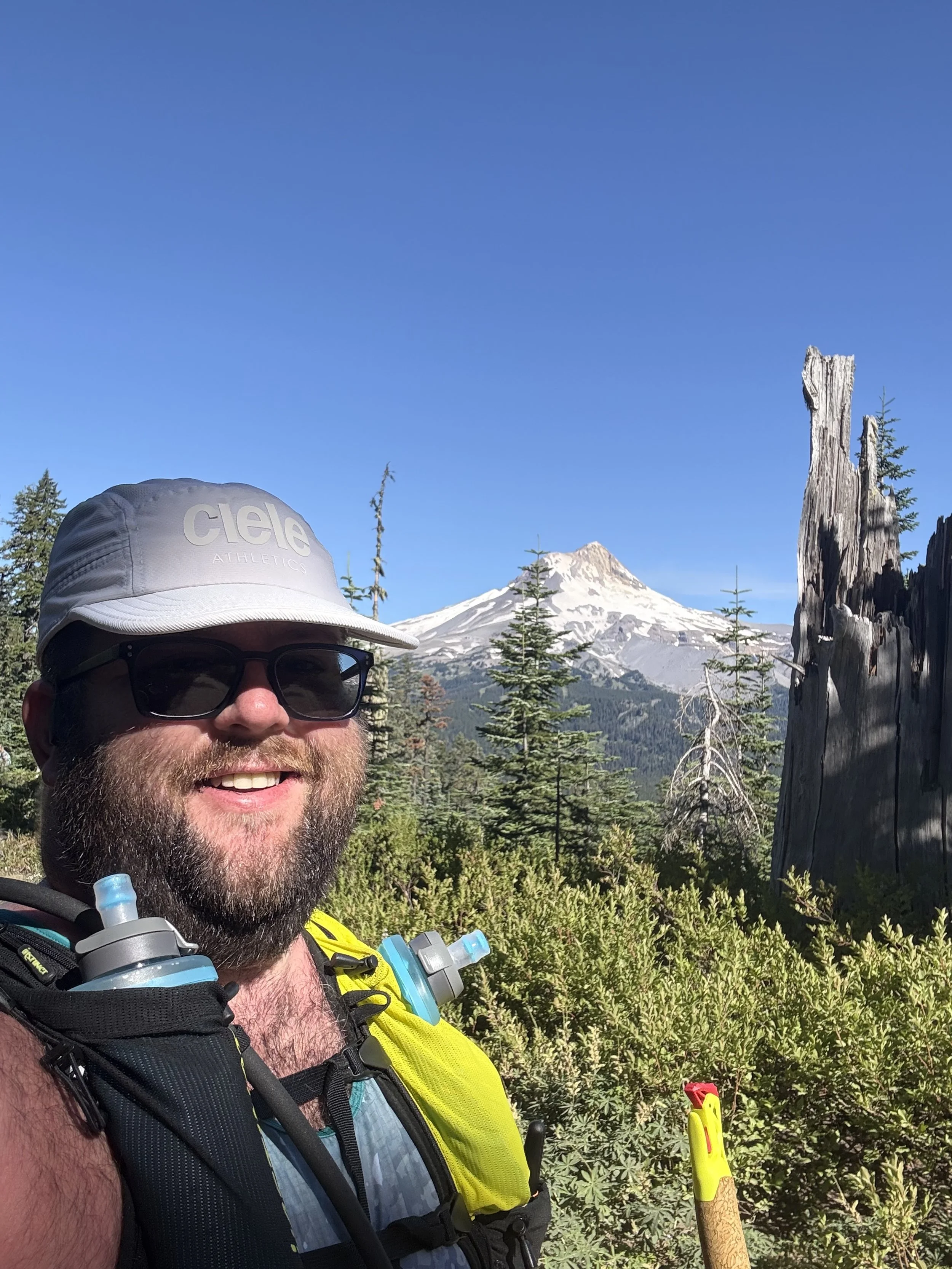

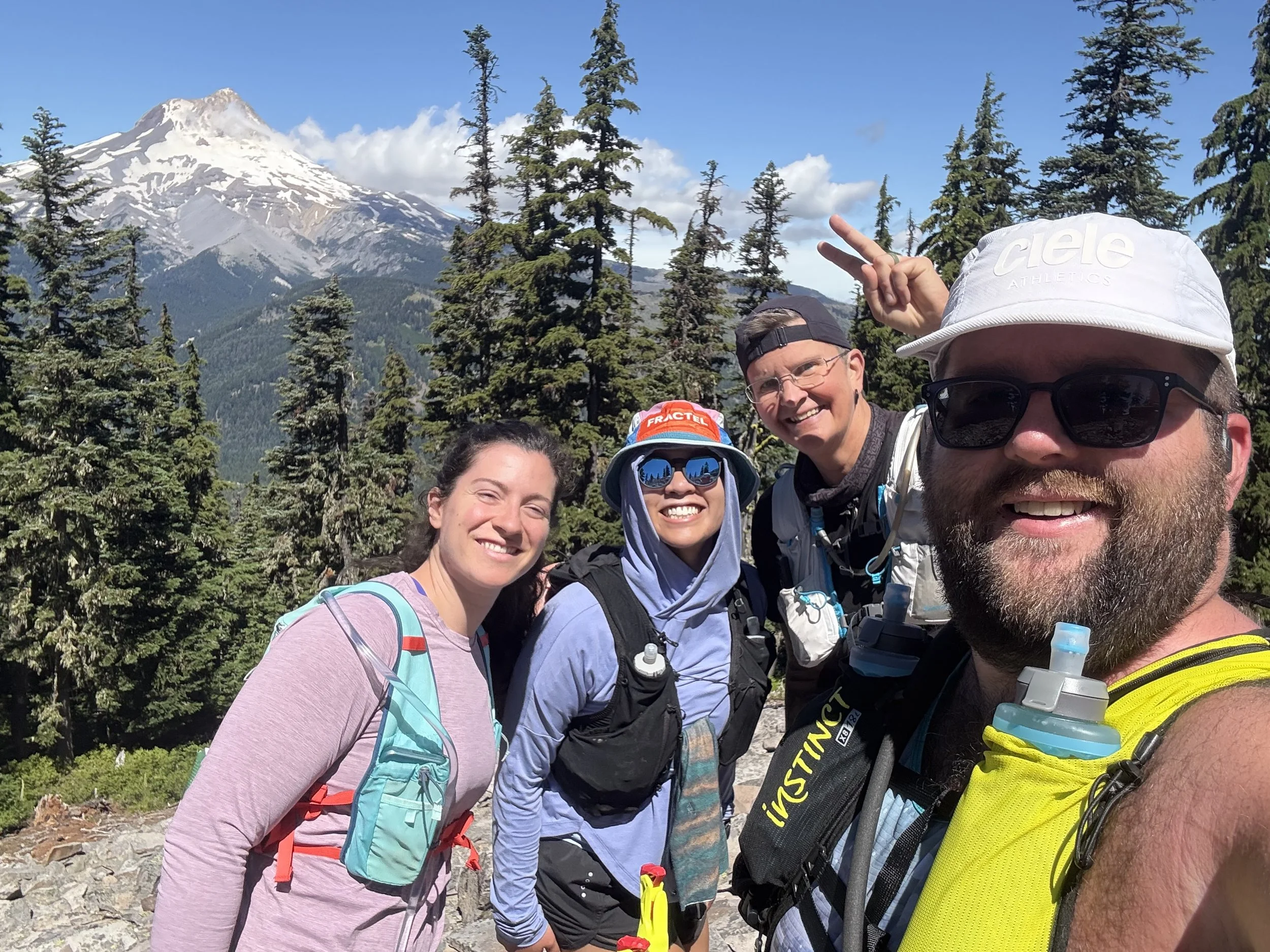
I made it to the third aid station and topped off my bottles. I should have topped off the bladder as well, but I wanted to get through there as quickly as possible. Halfway through the section from 3 to 4, I finally crested the top of the climb. It was at this point that the ladies sweeping the course behind me took a more active roll encouraging me so that I could make the cutoff at aid station 4. This aid station had a hard cutoff of 12:30 PM, 7.5 hours into the race.
Going into the race, I knew that I was gonna finish or get pulled off the course, but I wasn’t gonna quit; so I began pushing to make my way down to aid station 4. Hoping that I could make up the time I had lost. I was two ankle rolls in and was struggling to cut into the deficit that had built up, but the hope was that if I made it around the next corner I’d find an area that I could pick up more speed and go. At around 12:15 it was very evident that I wasn’t going to make it to the cutoff. As cool as it would be to click off some 6 minute miles for the last 2.5 miles, it wasn’t going to happen. In my push to make up time I had consumed more fluids than planned and I ran out of water about a half mile before I accepted that I was going to time out. The calculus changed and it was about getting to the final (for me) aid station safely and avoid doing any more damage to the ankle, and I still had a lot of descending to do. As I moved through switchbacks, I found my coach, Jesse and pacer, Dan had come up the trail to bring me in. Dan went in front and Jesse brought up the rear and we finished the last two miles to the aid station together. I did manage to roll my ankle one more time on these switchbacks, because I think they usually come in three’s, right? We finally came off the trail to the highway and made it to the fourth aid station. I found the radio operators to confirm my bib number with them and that I officially had my DNF.
My final stats were that spent 8 hours, 36 minutes and 26 seconds on the course. In that time I crossed 22.82 miles climbing 3963 ft and descending 6654 ft, burning 8904 kcal in the process.
Takeaways
I took a big swing with this race, and if I had finished, it would have been a homerun for sure. On this day, my final race result shows DNF: Did Not Finish. It’s easy to view races as binary. We win or we lose, we finish or fail, and while that is accurate, it isn’t the truth. There are grey area’s if we are willing and able to see them. Lessons to be learned in failure and success and things to be proud of. I didn’t have the day I had hoped for. I didn’t get to pick up Dan at mile 55, there were no hallucinations to look back on and laugh about when we sit around the table sharing stories from races…gonna have to keep using Dan’s stories for now. There were many successes as well.
I’ve spent over a decade terrified of rolling my surgery ankle again, because the pain of that injury and the recovery were long. It took many years before I was able to consider trail running after my ankle surgery to repair the torn tendon. Mile 6 could have been the end of my race. Nobody would have blamed me for backing out at that first aid station, but I chose to continue on and found that my body was able to adapt, even if it hurt a little.
I think I nailed my hydration and nutrition. It helps that I wasn’t in the Houston area and when you drink fluids and sweat, your body is able to cool itself, but never once did I feel depleted because I was lacking calories or dehydrated because I couldn’t take enough in. I felt like I had put in a huge effort, for sure, but I think that when it came down to it, I took in the right amounts at the right time.
My Coach (@coachjessehtx) summed it up this way:
Hood 100 – The Mountain Didn’t Win, It Just Made Us Smarter
Race Recap as Ben’s Coach and 1 of 4 of his race day crew.
This weekend, Ben took on something few people dare to even dream about: a 100-mile mountain trail race with over 17,000 feet of elevation gain. The Hood 100 in Oregon is brutal, beautiful, and unrelenting. And Ben signed up to face it as his first-ever 100-miler.
We knew going into this that training for that much climbing and unpredictable terrain while living at or below sea-level in the Houston area was going to be a massive challenge. But that didn’t stop Ben. He committed. He put in a solid training block. He dialed in and showed up ready.
Race day came. The weather was perfect. Fitness was solid. Fueling was on point. But sometimes the mountain has other plans.
Ben rolled his ankle a couple of times on the course and ultimately missed the cut-off time at the mile 24 aid station. That’s nearly a marathon through a difficult course and he kept pushing. That alone is a win in our book.
After 24 hours of reflecting and regrouping, we debriefed the race. We looked at what worked, and what didn’t. The fitness was there. The mindset was there. But it’s clear that we need even more downhill conditioning, more technical trail time, and more work in environments that force fast footwork and smarter movement.
This isn’t a failure. This is the process. This is what it looks like to chase something big, something that scares you. Ben didn’t back down. He didn’t make excuses. He owned the day, gave everything he had, and is already planning his return.
A DNF (Did Not Finish) doesn’t define an athlete. The courage to sign up, to train, to toe the line. That’s what defines them.
I’ve been coaching Ben since I started my coaching business in 2018. We’ve been through it all - Half Ironman, Ironman, Escape Alcatraz Triathlon, 50 Mile Ultra Trail Run.
He’s built different. He’s not scared of big goals. He embraces the climb and the setback. He shows up. And he’ll be back smarter, stronger, and hungrier.
The mountain may have held us back this time, but it also taught us things we need to know for the next one.
So where do I go from here? I recover and work to build a bigger and better base. I learned that a race director’s description of the course they live on may not quite match the definitions that I have of what is a technical course and what isn’t. Now I know where I need to grow and we have plans to make me a better mountain runner. The hard part will be getting to the mountains, but that’s just time. I need reps learning how to run downhill better and to learn how to do it on technical terrain. The mountain won today, but I’ll be back. It will be a few years, with many more goals in between, but I’ll be coming back to finish what I started.



